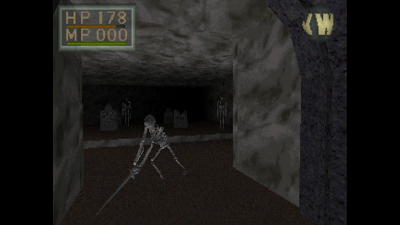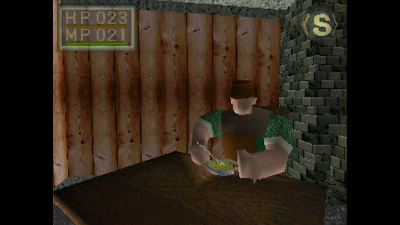Leading up to the release of Metroid Prime 4 I found it curious that the trailers were completely unable to show much of any hook. After playing it, it turns out that's because there isn't one. This is a completely by the books linear action adventure. It has a few things new to Metroid, biggest of which being the Control Beam that let's you control a bullet after shooting it. Not an earth shattering new mechanic since it has been in games for a long while now, but to Metroid Prime 4's credit it has enough restraint on hints and spacing between puzzles using it that I actually found myself delighted when using it several times. And that pretty much describes the whole game: there's nothing new here, most the ideas it presents have been done before or done better, but danged if it isn't at least pretty consistently well made and happens to be released in a dry spell for high budget action adventure games that don't have an open world stuffed into them. I spent 17 hours on it and it was done, never wore out its welcome, and that's completely delightful now that every other game is a 100 hour behemoth that has completely drained your soul by the end no matter how consistent its quality.
Let's start with the metroid in the room: yeah I called it an action adventure instead of a metroidvania. It's linear to an extreme, though it does include the requisite backtracking to get new items (in a few cases putting a little bit of effort into changing places after the events of your first foray). Areas are siloed away from each other on an overworld, making them pretty much Zelda dungeons. I fell off Metroid Prime 3 quickly for similar reasons, where that game used a menu between areas. I don't think Prime 4 does anything better in that regard (though perhaps the level design of the dungeons is better, I would have to revisit it), though the desert overworld (which consists entirely of a few microdungeons and a whole lot of gathering crystals by running into them) does make for a decent palette cleanser between the dungeons. I was far less ok with Metroid taking this direction years ago, but these days there are so many games filling the gaps that I don't really mind it as much (particularly with Zelda itself spinning into a different direction)
Atmospherically I absolutely adore the desert in terms of just being a desolate, lonely, empty place with the barest hint of music- it is at least stylistically a perfect concept for a metroid oveworld. I see a lot of people calling it too big which gave me high hopes that perhaps it tapped the Wind Waker's approach of building anticipation by seeing a location slowly coming into view but. No. It does not achieve that at all. Frankly it does a terrible job actually unifying the locations together since there's no real transition between them. I wouldn't call it too big either, driving across the entirety of it doesn't take that long. But the space just represents a break between the core dungeon crawling experience. Collecting crystals is a fine cooldown activity, but it also feels like the least effort concept possible for "thing to do in an overworld" and the number you have to collect is kind of high.
And now let's hit up the other metroid in the room: the NPCs. Yep, Samus isn't alone this time. You got a bunch of federation soldiers who got teleported with you and you gotta babysit them back home. Their dialogue is completely fine, albeit unremarkable. Portions where you play with them pretty much just boil down to them shooting at stuff and having to heal them occasionally. These sections get more frequent later in the game, but I didn't particular mind them- the game is kind of going for a different overaching "gimmick" with each dungeon, and the NPCs are part of that. Admittedly, as a result these also end up being the weaker dungeons of the game. Not because they're bad per se, but because the standard for NPC dialogue and set pieces has been set to a far higher bar for years now. Samus being a silent protagonist, presumably as an overreaction to the fan response to her more vulnerable presentation in Metroid: Other M, doesn't help (I do have a pet theory she's using her psychic powers to communicate since some questions do seem to get answered... but the game never directly says that's what going on).
They're good boys and girls and don't really spoil any puzzles, and I am frankly baffled at how many people on the Internet say otherwise (at most they'll mention an enemy is weak to an element). The one time I wanted a hint, they didn't offer one. They are, however, hyper aggressive at railroading you where to go next on the overworld (hence the not a metroidvania). That part isn't great. It really ruins the vibes of the desert. But I'd say it's also their only real sin. Lotta whining that you have to go back to base to install gun upgrades. This logically makes sense, though: in previous games you were finding Chozo tech so it was naturally compatible with your Chozo suit. This is a different lost alien race- the upgrades that don't require installation are their own psychic abilities native to them so it makes sense you don't need anyone to install those. Of course, the actual reason is just to get you to hang out with the federation troops periodically which has a reasonable number of extra moments with them. The number of load screens it takes to get to said home base ain't great though, it really should been put somewhere on the overworld instead of inside one of the dungeons.
Where the game shines the most is really just the visual and audio presentation. The environment design is in line with the rest of the Metroid Prime series, and it still looks cool as heck- particularly with changing the alien race to allow for a slightly different take. It has that certain air of early pre-rendered 3D in places, but done to a much higher standard- not just having the resolution boosted. The music is straight up incredible, evolving with each section of the dungeon and even when you make changes to the state of the dungeon. Metroid music has been in a pretty dismal state for a long while, so I was very pleasantly surprised to hear this come back. I will admit that some of the tracks don't hold up as well when just listening to them outside the game or revisiting the areas for cleanup- while the jump in intensity when powering a place up is amazing the first time you do them, the pieces end up a tad too repetitive when they're the only thing playing for long periods.
Honestly, I think what I find the most lacking is the story. It's rife with interesting directions, but refuses to capitalize on them at every turn. You end up exploring the ruins of a new lost alien race (as opposed to the usual old lost alien race of previous Metroid games) and reading datalogs and recordings explaining what happened to them. Their biggest attribute, and the overarching power of the game, is that they had psychic abilities and they give them to Samus- their Chosen One. Now that sounds rife for interesting lore for how a society functions when everyone has psychic abilities. Sounds like some real interesting ways for a civilization to collapse. While the game does have a pretty executionally great dungeon where you dive deeper and deeper into what happened to them, it has nothing to do with psychic abilities and uh. It's really not that interesting. The writing frankly lets down the quality of environmental storytelling the game is doing.
Well how about the other angle, Samus and the space marines trying to escape after being stranded on an alien planet? There's some juice in there. Samus, the famous bounty hunter who always works alone has to learn to depend on and work as a team? No, she's pretty much a legend to begin with and they all get along great. Well what if her psychic abilities cause internal strife because they don't like her rooting around in their minds, maybe one of them is secretly working for the villain? Yeah no. We get perfectly adequate exploration of their threadbare characters, but nothing more.
Hard to say if they were afraid of fan backlash and ended up avoiding good ideas out of fear, or the development hell the game underwent ended up with everything on the cutting room floor. The one element I actually do like is Samus' role as the Chosen One. There's certainly some set up for her to actually end up acting on that in future games, but in the context of this game it's actually very bittersweet how little she can actually help them in a way that I like a lot.
The Internet's response to this game has been particularly venomous for whatever reason. I sort of notice this lately, every "bad" game has to be the worst bad game. Balan Wonderworld and Concord come to mind. I suppose it's partially the nature of everything underlying our communication infrastructure rewarding anger (though considering the original Metroid Prime faced pre-release anger in its own right for going first person, this is hardly that modern of a problem), but I also think it's just because there are so few big budget games made these days that there aren't actually that many big bad games being made anymore so people have to find something, anything, to rip on. The simple reality is that with so much money and people put into fewer games it's pretty hard to make a bad one, at worst you make a bland one.
Metroid Prime 4 is certainly not a bad game. It's a bit old fashioned and out of time, but I think that actually makes it better for this moment- it wouldn't really hold up as well in the hay day of its genre. The combat hasn't really changed much since Metroid Prime 3, though it controls better. There are some parts that are merely Just Fine. While it doesn't have a ton of puzzles, the ones it does have are pretty good with plenty of restraint on giving away solutions. I suppose it makes sense that this would result in crushing disappointment for a lot of people, if you think about it. Breath of the Wild just reinvented Zelda and a core tenet of that reinvention is that it dramatically reduced the hand holding that had completely swallowed the series. Metroid has been shying away from getting lost in a labyrinth for a very long time, but can you blame people for hoping for its own Breath of the Wild moment where they started to trust players once again?
So should you play Metroid Prime 4? If you're in the mood for this kind of game and want a modern, pretty version of the formula with a great soundtrack then sure. It's not exactly a must play, but it's Pretty Good. It's Fine. It's what you want, as long as what you want isn't a metroidvania. I got to poke around beautiful, desolate planets filled with weird alien life forms with atmospheric yet melodic music in the background. Mission accomplished.
(Unimportant Spoilers) Man what was with giving the final boss a phase where he turns into a tiny RC car? Is that like.. a reference to Metroid Prime Hunters? Talk about killing a mood. You put that reference in the early fights, not the final one.
















